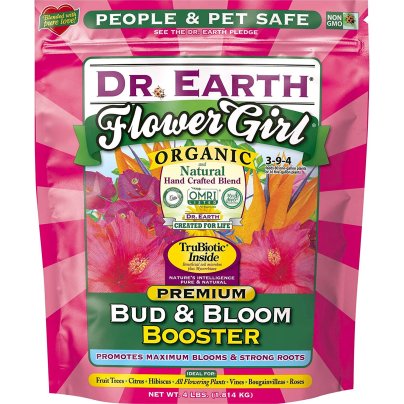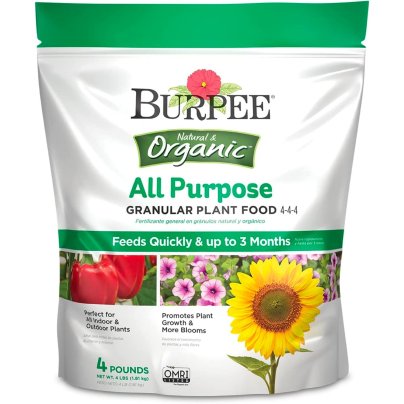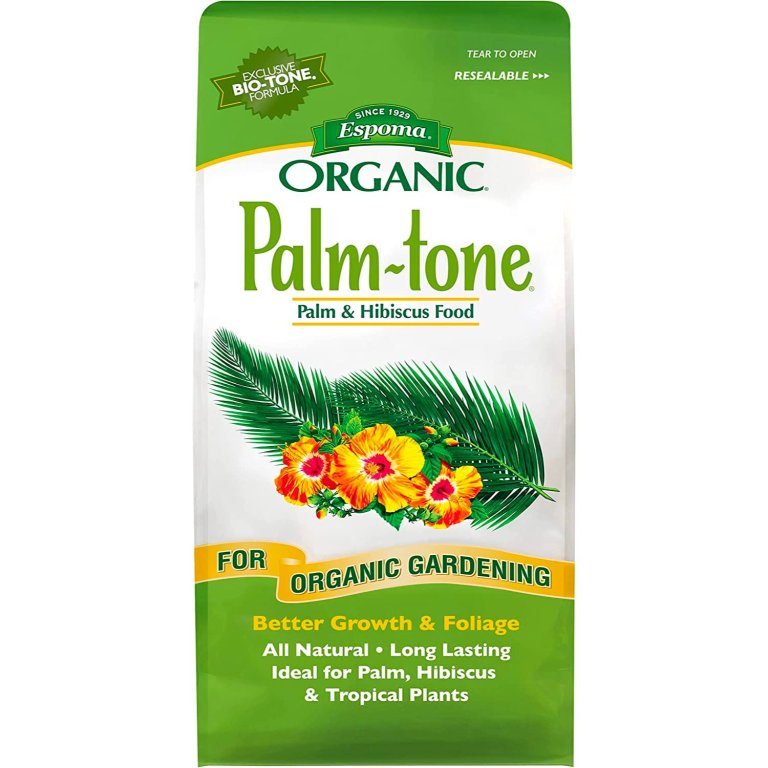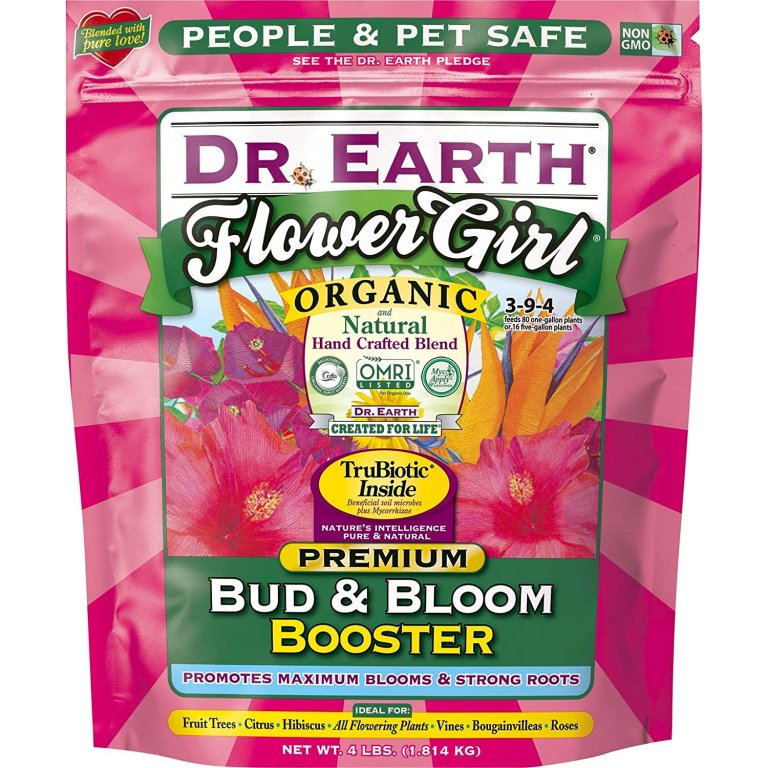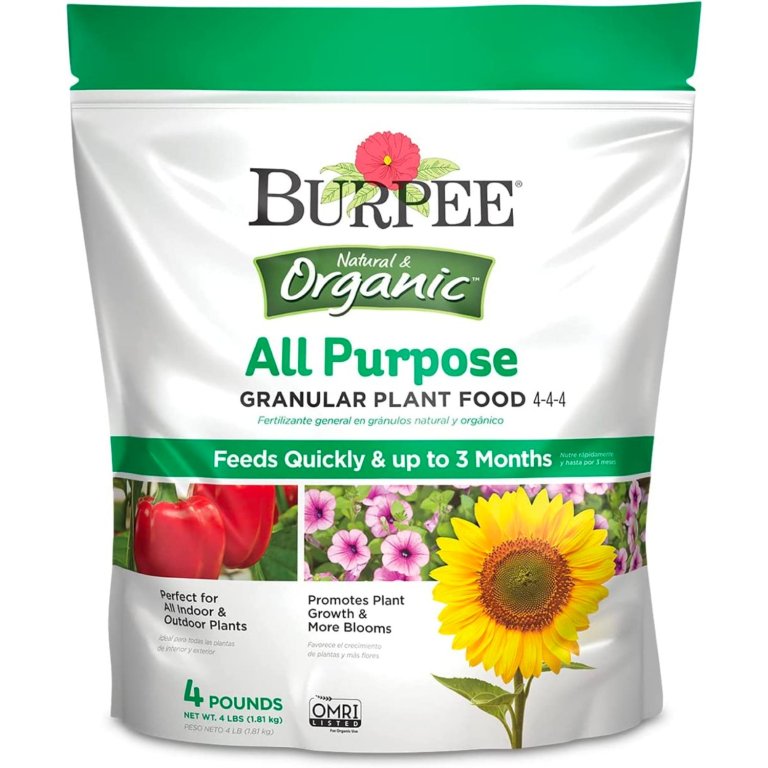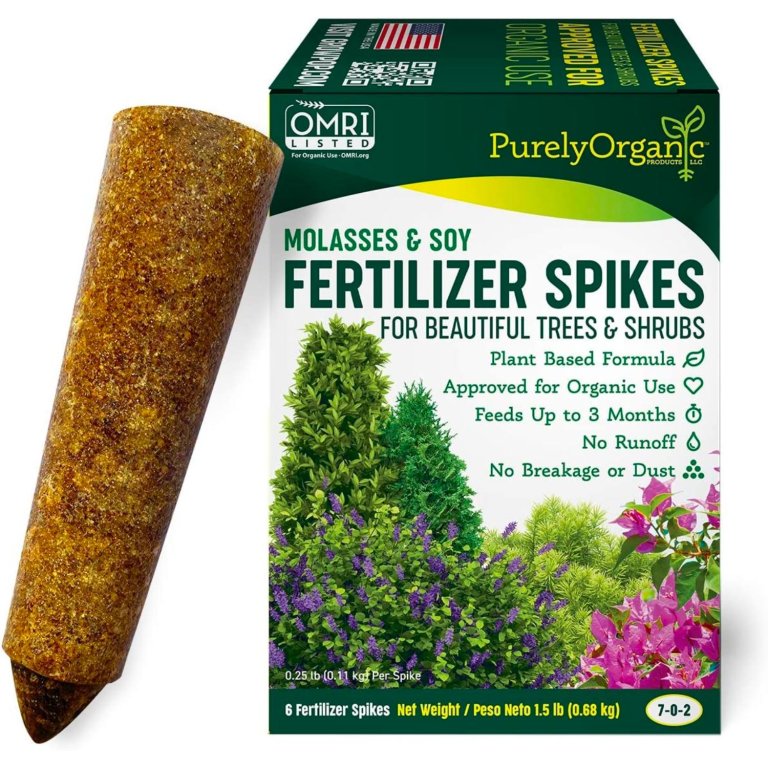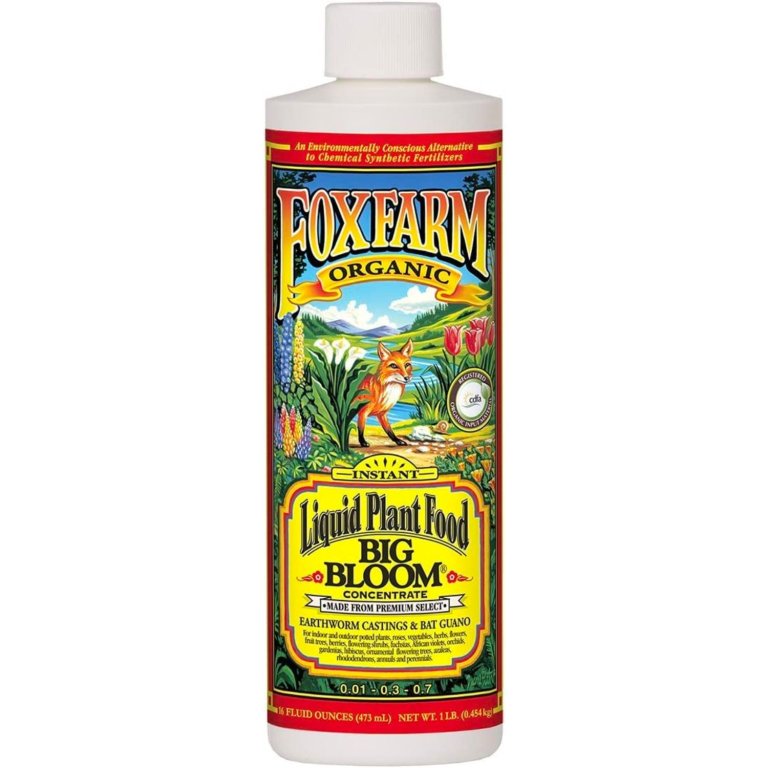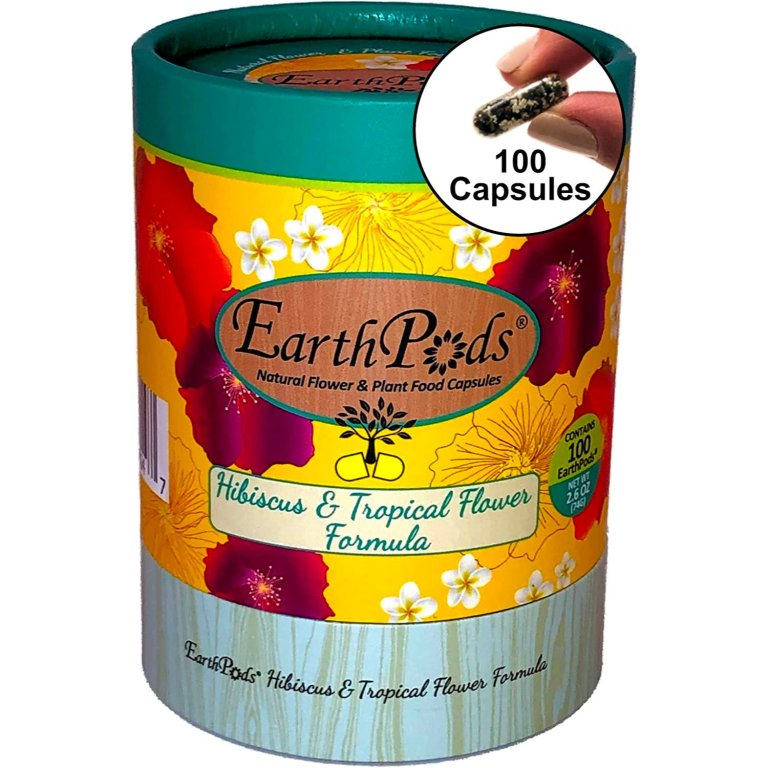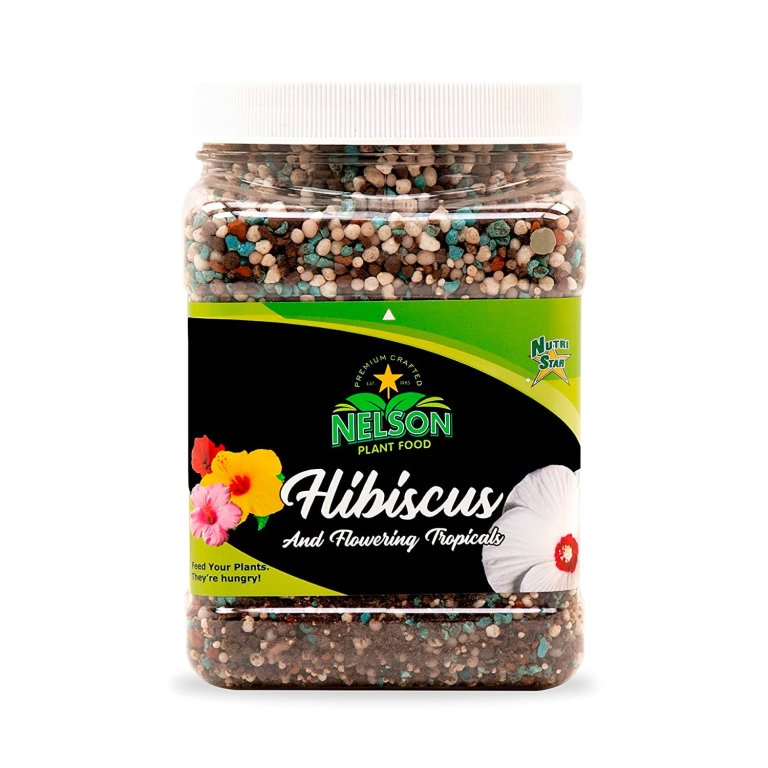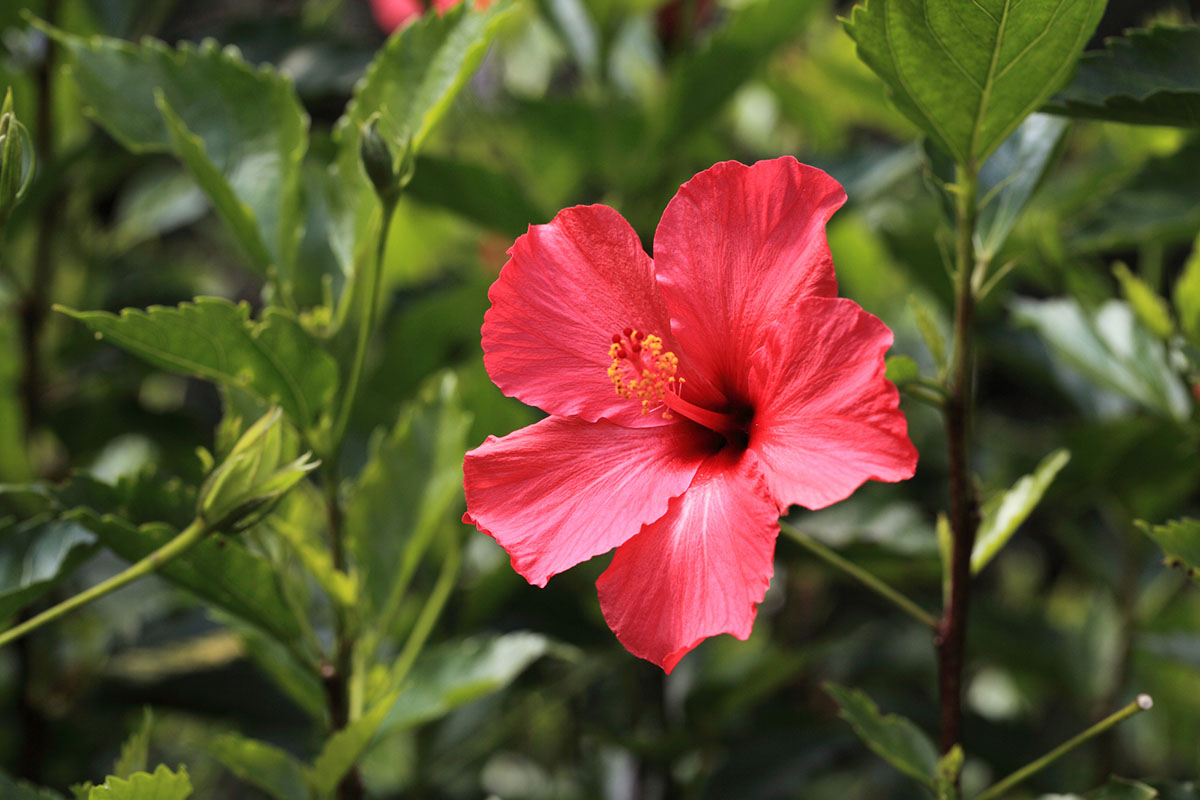
We may earn revenue from the products available on this page and participate in affiliate programs. Learn More ›
Hibiscus plants look gorgeous at the garden center. The lush, glossy green leaves provide a perfect background for vibrant pink, red, yellow, or orange blooms. But without the proper care, foliage quickly begins to turn yellow and flowers droop. Not only do these tropical beauties need ample sunlight and consistent moisture, but they also require good nutrition. Consistent feeding with high-quality plant food boosts the health and vigor of all plants, and hibiscus plants are no exception. In fact, these heavy feeders are more sensitive to nutrient swings than many other plants.
The best fertilizer for hibiscus must support all phases of growth and all aspects of the plant: foliage, stems, roots, and flowers. With so many available options, knowing which product to buy can be challenging. The list of top picks that follows addresses a variety of gardening styles and plant health concerns. Continue reading for the rationale behind the recommendations and reviews of each product.
- BEST OVERALL: Espoma Organic Palm-tone 4-1-5
- RUNNER-UP: Dr. Earth Flower Girl Organic Bud & Bloom Booster
- BEST BANG FOR THE BUCK: Burpee Natural All Purpose Granular Organic Food
- BEST SLOW-RELEASE: Purely Organic Tree & Shrub Fertilizer Spikes
- BEST LIQUID: FoxFarm Big Bloom Liquid Concentrate Fertilizer
- BEST PODS: EarthPods Premium Hibiscus Plant Food
- BEST INDOOR/OUTDOOR: Nelson Plant Food NutriStar Hibiscus Fertilizer
- BEST MULTIPURPOSE: Miracle-Gro Performance Organics All Purpose Granules
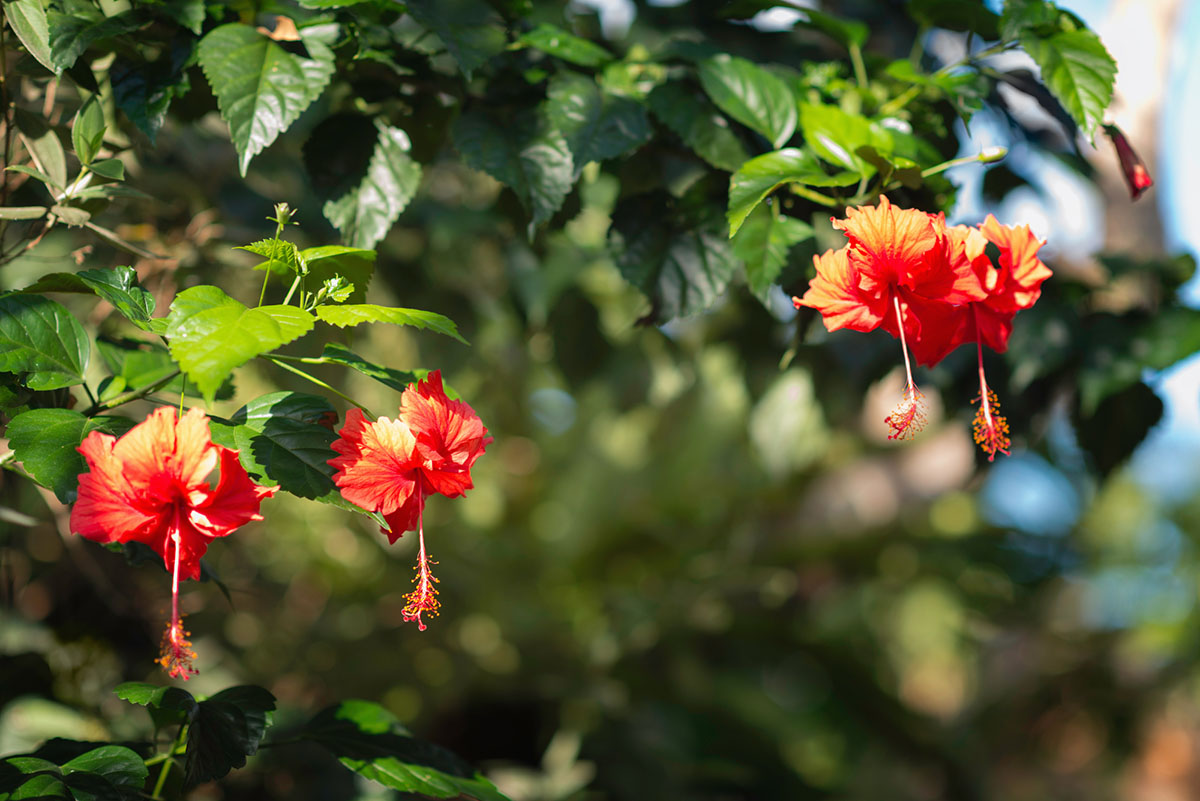
Before You Buy Fertilizer for Hibiscus
Choosing the right hibiscus fertilizer requires a knowledge of the specific plants’ needs and deficiencies. For example, hibiscus that lack iron will produce yellow leaves, whereas a magnesium deficiency will result in yellow leaves with dark green veins. Assess the plant’s condition before making a purchase.
Before buying and applying a hibiscus fertilizer, consider performing a soil test to determine the soil’s pH level and nutrient content. Use these test results to determine which fertilizer is the best fit.
How We Chose the Best Fertilizers for Hibiscus
Years of experience covering home and garden products, as well as extensive product research, went into creating this guide. We explored more than 20 hibiscus tree fertilizer options and weighed a number of practical considerations before making our recommendations.
- Organic vs. inorganic: We only considered organic hibiscus fertilizers for this guide since they are capable of top-notch performance without causing any negative environmental impact.
- Type: We considered both liquid and granular formulas for our recommendations since each of these fertilizer types offer unique benefits.
- Value: Sincehibiscus fertilizers vary in type and quantity, it can be hard to determine a product’s value. We ensured that each recommended product offered excellent value, regardless of the format.
Our Top Picks
This lineup represents some of the best fertilizers for hibiscus plants. All of these fertilizers will work either independently or in combination to promote healthy plants with deep green foliage and an abundance of vibrant flowers.
Best Overall
Espoma Organic Palm-tone 4-1-5
Pros
- This fertilizer includes a combination of macro- and micronutrients for well-balanced feeding
- It only needs to be applied every 3 months, leading to optimal value
- This fertilizer is certified organic and is safe to use around children and pets
Cons
- This fertilizer is specifically for palms and hibiscus plants, so it may not be ideal as an all-purpose fertilizer
Product Specs
- Type: Granular
- NPK ratio: 4-1-5
- Quantity: 4 pounds
Espoma Organic Palm-tone is an organic granular fertilizer that delivers 4-1-5 NPK, including 4 percent slow-release nitrogen for steady growth. It also includes 5 percent calcium and 1 percent sulfur to balance soil pH, as well as magnesium for healthy roots, stems, and leaves in both palm plants and hibiscus trees. These nutrients are derived from feather meal, poultry manure, bone meal, and alfalfa meal. For regular maintenance, apply it around any potted plants or in-ground hibiscus every 3 months for the best results. This product comes in a 4-pound bag and doesn’t need to be mixed with any other products, making it easy to apply.
Get the Espoma fertilizer for hibiscus at Amazon.
Runner-Up
Dr. Earth Flower Girl Organic Bud & Bloom Booster
Pros
- This all-purpose fertilizer is suitable for use on a variety of plants, trees, and shrubs
- Probiotics combine with macronutrients for optimal overall plant health
- The GMO-free formula doesn’t contain any chicken manure or sewage sludge
Cons
- Some users have reported that this fertilizer encourages gnat infestations
Product Specs
- Type: Granular
- NPK ratio: 3-9-4
- Quantity: 4 pounds
An excellent option for regular maintenance feeding of bulbs, tubers, corms, and rhizomes, Dr. Earth Flower Girl boasts a 3-9-4 NPK analysis, plus additional probiotics to boost overall plant health. This product contains eight select strains of ecto- and endomycorrhizae, which make plants more drought tolerant, provide enhanced nutrient availability, and increase overall performance.
Through a combination of ingredients, including fish bone meal, alfalfa meal, feather meal, soft rock phosphate, and mined potassium sulfate, this 4-pound bag of granular fertilizer can provide nutrients to hibiscus plants for several months. The formula is genetically modified organism (GMO)-free and doesn’t contain any chicken manure or sewage sludge.
Get the Dr. Earth fertilizer for hibiscus at Amazonor The Home Depot.
Best Bang for the Buck
Burpee Natural All Purpose Granular Organic Food
Pros
- This affordable fertilizer’s fine granular consistency is very easy to spread
- An evenly balanced nutrient ratio makes this product suitable for a wide variety of gardening uses
- This fertilizer contains beneficial microbes and is OMRI listed as being 100 percent organic
Cons
- This fertilizer isn’t as readily available from major retailers as some of our other recommended picks
Product Specs
- Type: Granular
- NPK ratio: 4-4-4
- Quantity: 4 pounds
Gardeners needn’t pay a lot to boost soil’s basic nutrient load thanks to Burpee Natural All Purpose granular organic food. This well-balanced 4-4-4 organic granular formula is immediately available for plants to absorb but also continues to release nutrients for up to 3 months between applications.
Its versatile formula makes it a great choice for hibiscus plants as well as all-purpose organic gardening. Use it for starting seeds and feeding vegetable gardens, trees, shrubs, and flower containers. Boasting a fine granular consistency that’s easy to spread, it’s a particularly good choice for container gardening. This product has been OMRI listed as being 100 percent organic.
Get the Burpee fertilizer for hibiscus at Amazon or Burpee.
Best Slow-Release
Purely Organic Tree & Shrub Fertilizer Spikes
Pros
- Application is simple, and the spikes are strong enough to maintain their shape when hammered into potting soil
- These spikes only need to be applied once per season as they deliver slow-release nutrients
- This fertilizer is OMRI listed for organic use and is safe to use around children and pets
Cons
- This formula doesn’t contain any phosphorus, so some plants may require supplemental products.
Product Specs
- Type: Spikes
- NPK ratio: 7-0-2
- Quantity: 6 spikes
Purely Organic Tree & Shrub fertilizer delivers steady, season-long plant nutrition from a single organic fertilizer spike. The 7-0-2 NPK analysis is derived from molasses and soy protein to support general plant health, promoting vibrant color and strong roots.
Apply it once in the spring and again in the fall, supplementing it with liquid plant food throughout the season as needed. One spike is sufficient for approximately 3 feet of plant height. Each spike simply needs to be hammered into the earth near the hibiscus plant and is designed not to crack or shatter during this application process. The product is OMRI listed for organic use.
Get the Purely Organic fertilizer for hibiscus at Amazon.
Best Liquid
FoxFarm Big Bloom Liquid Concentrate Fertilizer
Pros
- This product is suitable for all fruiting and flowering plants at all stages of growth
- Includes key nutritional ingredients like bat guano and earthworm castings
- The concentrated formula is OMRI listed and registered as CDFA Organic Input Material.
Cons
- This fertilizer should be paired with a slow-release granular formula for the best results
Product Specs
- Type: Liquid
- NPK ratio: 0.01-0.3-0.7
- Quantity: 16 ounces
For large, beautiful hibiscus blooms, consider FoxFarm Big Bloom liquid concentrate fertilizer, with a fertilizer analysis of 0.01-0.3-0.7. It is formulated for all fruiting and flowering plants and is versatile enough to be used during all stages of plant growth. Two of the primary ingredients are bat guano and earthworm castings, both of which pack a serious punch in terms of their nutritional makeup. Use it in combination with slow-release granular plant food for consistent nourishment of heavy-feeding hibiscus.
The organic formula is OMRI listed and registered as a California Department of Food and Agriculture (CDFA) Organic Input Material. The manufacturer recommends mixing 4 tablespoons of fertilizer per gallon of water in a watering can every other watering for the best results.
Get the FoxFarm fertilizer for hibiscus at Amazon.
Best Pods
EarthPods Premium Hibiscus Plant Food
Pros
- Each container includes 100 capsules, which the manufacturer estimates as a 4-year supply
- Since pods simply need to be inserted into the earth, they are easy and tidy to use
- Includes 70 trace elements, humic acid, fulvic acid, and a host of beneficial microbes
Cons
- This fertilizer may need to be combined with more nutrient-rich products for plants with moderate to high nutrient deficiencies
Product Specs
- Type: Pods
- NPK ratio: 0.2-0.2-0.4
- Quantity: 100 pods
Organic products are all about promoting a diverse and healthy soil biome that naturally feeds plants. EarthPods Premium hibiscus plant food does just that with a mild 0.2-0.2-0.4 NPK analysis, plus 70 trace elements, humic acid, fulvic acid, and a host of beneficial microbes. These elements work to stimulate soil-dwelling fungi and bacteria, increase soil organic matter, unlock native fertility, and enhance nutrient transfer from the soil to the plant. Insert an EarthPod concentrated capsule into the soil at the plant base, and that’s it. Each container includes 100 EarthPods.
Get the EarthPods fertilizer for hibiscus at Amazon.
Best Indoor/Outdoor
Nelson Plant Food NutriStar Hibiscus Fertilizer
Pros
- The high level of potassium in the formula promotes the growth of large, healthy flowers
- The product is packaged in a resealable 2-pound plastic jug, making for easy storage
- This product is suitable for both indoor and outdoor plants
Cons
- The price per pound for this product is slightly higher than other picks on our list
Product Specs
- Type: Granular
- NPK ratio: 10-4-12
- Quantity: 2 pounds
In cooler locations, hibiscus plants can only be grown indoors, so this indoor/outdoor formula from Nelson Plant Food is an excellent nutritional solution. While it’s marketed for hibiscus plants, it’s suitable for all flowering tropical plants. The 10-4-12 formula indicates a high level of potassium, which promotes flower growth.
Work the granules into the upper soil layer around each plant and water thoroughly. Each application lasts for approximately 4 weeks. It is packaged in a resealable 2-pound plastic jug, making the product easy to store.
Get the Nelson Plant Food fertilizer for hibiscus at Amazon or AG Organics.
Best Multipurpose
Miracle-Gro Performance Organics All Purpose Granules
Pros
- This fertilizer only needs to be applied every 6 weeks
- It comes in a resealable plastic jug, making for easy and tidy storage
- This fertilizer is safe to use around children and pets
Cons
- This fertilizer is not specifically formulated for hibiscus plants
Product Specs
- Type: Granular
- NPK ratio: 9-2-7
- Quantity: 2.5 pounds
Miracle-Gro Performance Organics All Purpose granules offer a 9-2-7 NPK analysis that’s perfect for hibiscus, along with other nutrients that support healthy roots, foliage, and flowers. Results may be visible within 7 days when compared to untreated plants. The fertilizer feeds for up to 6 weeks per application. Use this organic fertilizer alone or supplement it with liquid plant food as needed. It comes in a handy 2.5-pound reclosable jug.
Get the Miracle-Gro fertilizer for hibiscus at Amazon.
Or, DIY Your Own Fertilizer for Hibiscus
While there are plenty of commercially produced hibiscus fertilizers on the market, gardeners can also whip up a DIY homemade fertilizer using food scraps and other organic matter. To make DIY fertilizer, simply combine equal parts of compost, manure, and soil. Then add a teaspoon of Epsom salt and mix together until everything is blended evenly. Sprinkle this fertilizer on the soil around the hibiscus plant every month or so to help it grow strong and healthy. There are also bits of household waste that can work as nutritious additives. Coffee grounds, for instance, make for an excellent natural fertilizer, as do banana peels.
Jump to Our Top Picks
Our Verdict
After reviewing this guide, you now know more about shopping for hibiscus fertilizer. We recommend Espoma fertilizer for hibiscus as our top pick for its versatility, organic formulation, and availability. There are other common hibiscus fertilizer options, including Scotts All Purpose Flower & Vegetable Food and Miracle-Gro Liquafeed Advanced Starter Kit. However, they do not meet our sustainability guidelines and are not recommended in our top picks due to their potentially harmful ingredients and negative impact on the environment.
What to Consider When Choosing a Fertilizer For Hibiscus
It is vital to choose plant food that works within a particular gardening system. Read on for tips about the factors to consider when shopping for the best fertilizer for hibiscus based on gardening style.
Type
Fertilizer comes in many forms. The first choice most gardeners encounter is liquid versus granular. The primary difference lies in the amount of time it takes for the plants to absorb the nutrients—and how long they last.
The nutrients in liquid plant food are immediately available, delivering visible results within a few days. Whatever the plants don’t absorb at the time of application quickly washes through the soil, so use these products frequently.
Granular fertilizer dissolves gradually, delivering a slow and steady feeding. Results may not be visible until a week or two after application, but the effect may last for 6 weeks or more. Hibiscus plants benefit from a combination of time-release granular for a long, slow feed, plus regular applications of fast-acting liquid in times of greater nutrient need, like between bloom cycles.
Organic vs. Inorganic
Plants absorb the nutrients from organic and inorganic fertilizer similarly, but the nutrients are made available differently. Inorganic nutrients dissolve in water and are immediately available for plants to use. Organic plant food must be transformed by soil-dwelling microbes into a form that is usable by plants. Organic fertilizer feeds the plant indirectly by first feeding soil microbes. This leads to a healthy increase in soil organic matter and more efficient nutrient use over time. But organic fertilizer works slowly, making it less effective for correcting immediate plant deficiencies.
While inorganic plant food is inexpensive, easy to use, and delivers a higher nutrient load pound-for-pound than organic plant food, we did not consider inorganic fertilizers for our recommendations due to the potential negative environmental impact.
N-P-K Ratio
Nitrogen (N), phosphorus (P), and potassium (K) are the three main nutrients that plants use in large quantities: N for foliage growth, P for root and flower development, and K to regulate a variety of metabolic processes. They are listed on fertilizer packaging as a numerical ratio, such as 10-10-10 or 12-4-8, always in the order N-P-K. These numbers, called the guaranteed analysis, reveal the percentage by weight of each nutrient in the fertilizer mixture.
Hibiscus plants use relatively large quantities of N and K and far less P. At planting time and annually as new growth begins in spring, fertilizer with an analysis like 10-10-10 will provide a balanced startup feeding. For regular feeding, choose a plant food with a fertilizer analysis like 12-4-8 or 17-5-24.
Plants’ Needs
When new leaf growth begins in spring, apply a granular or slow-release fertilizer. This will ensure a mild, steady feed as the plant grows new foliage and forms flower buds. Follow up two or three more times through the growing season with slow-release plant food for consistent nourishment.
Apply liquid fertilizer with high N, low P, and high K content throughout the growing season. Mix the fertilizer into potting mix at half the recommended strength and feed twice as often for more consistent results. Begin when flower buds start to form and continue through late summer or early fall when the weather begins to cool and the plant prepares to enter dormancy.
Soil Condition
The soil condition refers to physical properties like particle size and compaction. The condition affects moisture retention, drainage, and aeration. Hibiscus plants grow well in moist, well-drained soil that is not tightly compacted. Containers work well as do well-prepared garden beds. Soil that stays wet is not suitable for these plants.
The amount of organic matter in the soil affects its ability to retain nutrients, such as after fertilizing with liquid plant food. Soil with more organic matter retains fertility longer and more consistently than soil with less. When gardening in the ground instead of containers, use organic fertilizer to support and increase organic content in the soil.
FAQs
Keep reading for answers to some of the most frequently asked questions about using fertilizer and hibiscus plant care.
Q. Is hibiscus an indoor or outdoor plant?
Although a blooming hibiscus makes an attractive gift and a beautiful display, it requires intense light to grow well. For best results, plan on growing hibiscus outdoors, as long as the weather allows. When temperatures dip below 40 degrees Fahrenheit, bring the plants indoors to overwinter them.
Q. Do hibiscus plants come back every year?
Hardy hibiscus, including rose of Sharon and many perennial types, come back year after year in temperate regions. Tropical hibiscus will not withstand freezing temperatures and should be either brought indoors for the winter or considered an annual to be discarded at the end of the season.
Q. How do you take care of a hibiscus plant?
Whether they grow in the ground or containers, the care of a hibiscus plant is similar. Grow them in full sun to partial shade. Water them frequently to prevent the soil from drying out. Feed them lightly and regularly. And occasionally loosen the soil surface over the plants’ root zone to promote water and plant food penetration.
Q. How do you fertilize hibiscus?
Use a combination of balanced organic or slow-release granular fertilizer and high N and K liquid fertilizer. Spread the granular plant food on the soil surface. Apply the liquid by soaking the root zone.
Q. How often should I fertilize hibiscus?
Apply slow-release fertilizer two to four times per year, depending on the length of the growing season. Apply a weak solution (quarter-strength or half-strength) of liquid fertilizer weekly.

